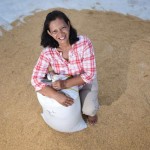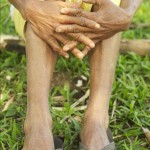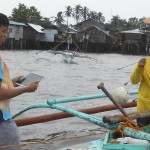
Under the afternoon sun in the Philippines, harvested grain lays on a solar dryer before processing in a rice mill. Three feet away from the mounds of grain, Anna Grace Cabillo, secretary of the Kasaganahan Irrigators Association Inc., keeps watch.
When a tropical storm hit a small village in the Philippines last year, a simple yet effective flood early warning system proved its worth, saving lives and better preparing residents for the inevitable natural disasters that affect the region.

In 2012, USAID launched the five year, $22.5 million Biodiversity and Watersheds Improved for Stronger Economy and Ecosystem Resilience (B+WISER) Program to help the Philippines conserve biodiversity, manage forests, support low emissions, and contribute to disaster risk reduction in seven protected areas in the country.

Joy*, 49, lived a basic, comfortable life in the remote, rolling hills of Ormoc City in the central Philippine islands. She and her husband made coconut wine and sold two barrels a week to support their family.

Fisheries help fuel the Philippine economy. The country ranks eighth globally in fish production, but overfishing caused the fish population to decrease by 90 percent in the last five decades. Meanwhile, 40 percent of Filipino fishers live below the poverty line. Poor and vulnerable, feeding their families is a daily trial.








Comment
Make a general inquiry or suggest an improvement.